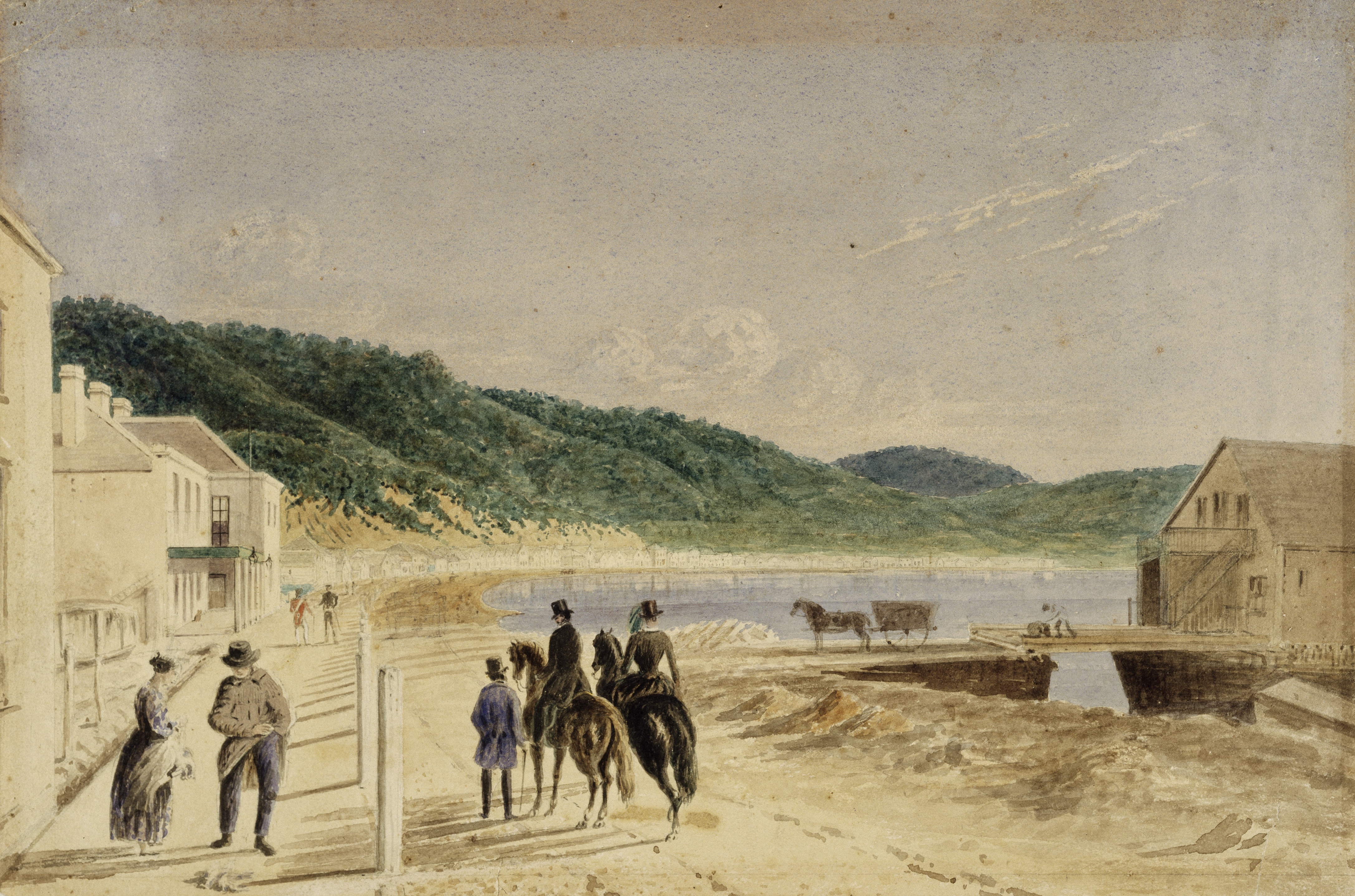
But, interesting as that is, the reason I chose this picture is the horses. It made me think about how different the sights, sounds and smells of a horse-powered town must have been.
Horses were everywhere. Some were equine aristocrats, like these two in the foreground — well-bred and elegantly presented, all ready for an eye-catching promenade down the quay. Most, though, were humble working horses, like the one in the background, patiently waiting outside the Plimmer hulk. The town depended on them, for all kinds of transport, services and cartage.
As the town grew, so did the horse population. Everywhere there were stables, big and small — behind the hotels, down alleyways, or attached to houses and shops. They could be uncomfortable neighbours. Amongst the many horse-related complaints in the Wellington City Council archives is one about stables on Taranaki Street: “The stench from these places is something awful and with a drop of rain the juice is running all over the footpath.” They could be noisy too. At the end of the day there was a lot of feeding and grooming to do, and larger stables were sometimes rowdy male hang-outs until late in the evening.
More enthusiastic about the capital’s equine inhabitants was young Pat Lawlor. In his classic 1959 book Old Wellington Days, he remembered how the city’s stable owners took their horses to Oriental Bay for a regular Sunday swim: “It was great to watch them, though you had to be wary when they came out of the water.” The beach became so crowded with horses on a Sunday that the Wellington Harbour Board decreed they all had to be gone by 8.30am.
Wellington’s horse population peaked just before the First World War. The status-conscious were more likely to fancy a new car than a fine horse and gig. Horses still did much of the heavy shifting around the town, but numbers declined. The last working horses were those doing the city milk deliveries. They were finally pensioned off in 1956.




